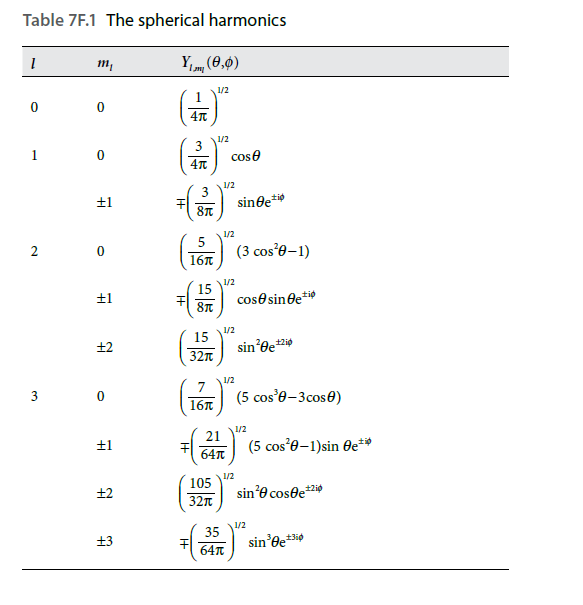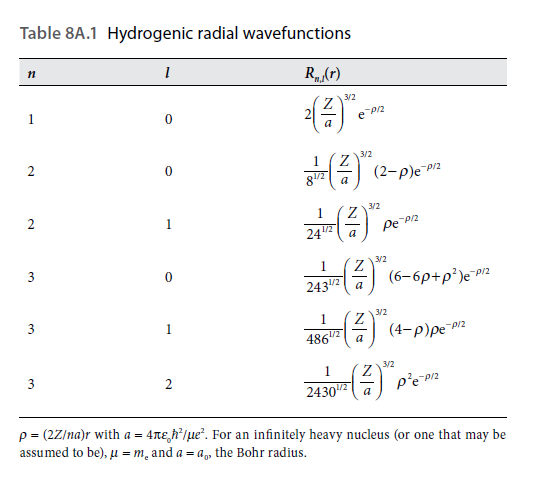Table 7F.1 The spherical harmonics Ym (0,0) 1/2 4 (유) 1/2 3 1 cose 1/2 3 ±1 sinde*i 1/2 (3 cos'0-1) 16T 1/2 15 ±1 cose sinde*i tip 1/2 15 +2 32n 1/2 7 (5 cos'e-3cose) 3 16T 1/2 21 ±1 (5 cos'e-1)sin Oe** 64T 1/2 105 ±2 sin'e coseei0 32n 1/2 35 13 sin'de* 64T 2. Table 8A.1 Hydrogenic radial wavefunctions R(r) 3/2 (). 1 e P2 a 3/2 2 1 Z. 81/2 (2-p)e-p/2 a 3/2 2 1 PI2 242a 1 3/2 2432 a -) (6-6p+p²)e¯/2 3 1. 3/2 1 486 (4-p)pe-p12 台。 3 1. 3/2 24302 a p = (2Z/na)r with a = 4ne,h*/µe². For an infinitely heavy nucleus (or one that may be assumed to be), µ = m, and a = a, the Bohr radius. en
Explicit expressions for hydrogenic orbitals are given in Tables 7F.1 (for the angular component) and 8A.1 (for the radial component). (a) Verify both that the 3px orbital is normalized (to 1) and that 3px and 3dxy are mutually orthogonal.Hint: It is sufficient to show that the functions eiϕ and e2iϕ are mutually orthogonal. (b) Identify the positions of both the radial nodes and nodal planes of the 3s, 3px, and 3dxy orbitals. (c) Calculate the mean radius of the 3s orbital. Hint: Use mathematical software. (d) Draw a graph of the radial distribution function for the three orbitals (of part (b)) and discuss the significance of the graphs for interpreting the properties of many-electron atoms.


Trending now
This is a popular solution!
Step by step
Solved in 5 steps with 5 images
